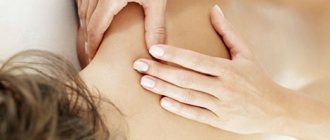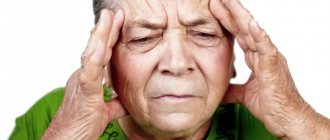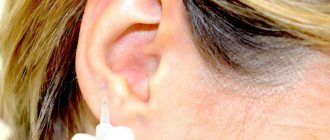Author's rating
Author of the article
Shoshina Vera Nikolaevna
Therapist, education: Northern Medical University. Work experience 10 years.
Articles written
218
One of the diseases that affects older people is Parkinson's disease. This pathology is evidence of disturbances in the functioning of the central nervous system. It is degenerative and chronic. What and in what form a person eats is important for brain activity. Therefore, in Parkinson's disease, proper nutrition is of particular importance.
General rules
If a patient has Parkinson's disease, the following symptoms are observed:
- tremor of the head or hands;
- feeling of stiffness in movements;
- change in facial expressions;
- decreased muscle mobility.
The Parkinson's diet helps improve the patient's well-being and reduces the severity of the main symptoms of the disease.
The hypocholesterol diet is popular. The basis of the diet consists of the following products:
- vegetables;
- legumes;
- greenery;
- nuts;
- whole wheat bread;
- lean meat;
- fish dishes;
- seafood;
- dairy products with a low fat content;
- dishes with the addition of flaxseed or sesame oil.
Ketogenic diets have also been proven to be effective. It is actively used in the presence of various pathologies of the nervous system (epilepsy, Parkinson's disease).
The main principle of the diet is quite simple. The patient needs to reduce carbohydrate intake by 3-4 times. With a lack of carbohydrates, fats take an active part in the metabolic process, the breakdown of which leads to the formation of:
- ketone bodies;
- fatty acids.
Ketone bodies have a beneficial effect on brain function and activate the production of antioxidants.
Ketone bodies help slow down the rate of free radical production. They stop the process of neurodegenerative changes.
The patient’s menu should include foods enriched with vitamins, caffeine, and calcium. They are presented in the corresponding table.
| Products enriched with vitamin C. | Ascorbic acid slows the progression of the disease. Vitamin C-rich foods include cauliflower, rose hips, sea buckthorn, and oranges. |
| Vitamins belonging to group B. | The level of dopamine depends on the number of foods enriched with vitamin B1 in the menu. It is recommended to include spinach, potatoes, oatmeal dishes, and carrots in the diet. Vitamin B2 prevents depression. Sources of this vitamin are kidneys, dairy products, rose hips, eggs, and cabbage dishes. Folic acid (vitamin B9) is present in large quantities in spinach, asparagus, lettuce, and avocado pulp. Sources of vitamin B6 include: meat, grains, bananas, strawberries, potatoes. Nicotinic acid (B3) helps strengthen weakened immunity and eliminates irritability. This substance is found in peanuts, bran bread, and beef liver. |
| Vitamin E. | It has a neuroprotective and antioxidant effect. This substance is found in almonds, pistachios, and walnuts. Wheat sprouts, salmon, and dried apricots are also rich in vitamin E. The recommended daily intake of vitamin E is 200 IU. |
| Vitamin D | Useful vitamins can be obtained from cottage cheese, yoghurts without fruit fillings, cheese, mackerel, seafood, herring, and fish oil. The optimal daily dose is 400 IU. |
| Vitamin N | The vitamin, characterized by neuroprotective properties, is present in liver, sour cream, cream, veal, and beans. |
| Calcium. | Contained in sesame seeds and fermented milk drinks. |
| Magnesium. | The macroelement facilitates the process of neuromuscular impulse transmission. A large amount of magnesium is found in pumpkin seeds, peanuts, almonds, wheat bran, walnut kernels, beans, and dates. |
| Sulfur. | Sulfur is known for its antioxidant properties. It is found in high concentrations in pike, sardines, rabbit, chicken, peas, and flounder. |
| Coenzyme Q10. | It stimulates the production of cellular energy and helps slow down the process of neuronal destruction. In combination with coenzyme Q10, you should also consume foods that contain coenzyme A. Coenzyme A relieves fatigue, eliminates irritability, and improves metabolism. The corresponding vitamins are found in liver, chicken, mackerel, brown rice, and eggs. |
Caffeine-rich foods help eliminate toxins and help strengthen the blood-brain barrier. Caffeine can neutralize A2A adenosine receptors. These receptors normalize the release of glutamate, which has a destructive effect on motor neurons.
Pros and cons of the diet
The cholesterol-lowering diet is well tolerated. It can be followed for a long time. The diet helps improve well-being, normalizes metabolism, and has a general strengthening effect on the body.
The disadvantages of this diet are given below:
- relatively high cost of seafood;
- difficulties with choosing high-quality fresh vegetables in the winter season.
The ketogenic diet alleviates the main symptoms of Parkinson's disease (autonomic disorders, tremor). The disadvantages of this technique are the occurrence of weakness and loss of strength in the patient.
The cholesterol-lowering diet can be followed without any restrictions. When choosing a ketogenic technique, you must first consult with your doctor.
The ketogenic diet has contraindications. The use of this technique should be abandoned in patients who have been diagnosed with severe cardiovascular pathologies and elevated blood sugar concentrations.
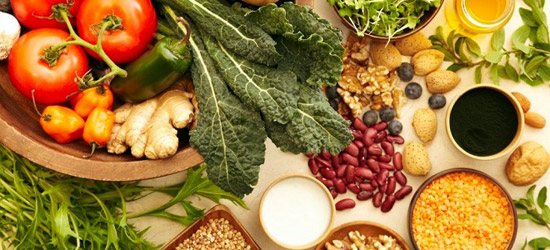
Types of diets
For this disease, the following types of diets are used:
- Mediterranean;
- Ketogenic;
- Gluten-free.
The Mediterranean diet is the optimal nutritional option for patients. It is necessary to prevent the development of atherosclerosis and provide sufficient fiber. Nutrient balance: 60% carbohydrates, 30% fat and 10% protein.
Diet Basics:
- The diet includes a large amount of fresh vegetables and fruits, fruits, nuts, seeds, grains;
- Dairy products are used in the form of cottage cheese, yogurt and cheese;
- No more than 4 eggs per week are allowed;
- Fish and white meat are consumed in moderate quantities;
- Red meat is consumed in minimal quantities;
- The basic diet includes a lot of olive oil.
Pros:
- This type of nutrition is optimal in terms of calories;
- It is a good prevention for high cholesterol and systemic atherosclerosis.
Nutrition and diet cannot stop progressive Parkinson's disease. But the influence of ketogenic food on the development of chronic diseases of the nervous tissue is being actively discussed. Read the detailed description below. It should be noted that there is no long-term evidence base on the benefits of this diet.
The effect of a gluten-free diet on Parkinson's disease is controversial. Cereals containing gluten are removed from the diet. The patient’s diet is depleted, because plant foods are the main source of vitamin B. In addition, a gluten-free diet increases the cost of the patient’s diet.
What are the permitted products?
The basis of the daily menu is:
- cereals;
- cereal dishes;
- vegetables;
- fruits.
Consumption of cereals, poultry, eggs, and butter is allowed. It is also acceptable to include dairy products and meat dishes in the diet. For Parkinson's disease, choose lean meats. An airy meat soufflé and steamed cutlets are prepared from turkey or chicken.
For Parkinson's disease, drink compote, tea, juice, and jelly. The diet contains milk with a low fat content. You can drink decoctions made from medicinal plants, berry fruit drinks. Drinks made from skullcap and valerian root have a pronounced calming effect.
You can prepare porridge from oatmeal and buckwheat. Such dishes need to be cooked in water. Porridges with a semi-viscous consistency improve intestinal functions, normalize blood pressure, and improve the condition of the brain. The patient should refrain from eating pearl barley. The diet of a patient suffering from Parkinson's disease should contain fruits, berries, and fruits. Vegetables are boiled or stewed. You can also cook puree soups from them. The following vegetables are especially beneficial:
- beet;
- garlic;
- pumpkin.
Fresh fruits, peeled, help improve intestinal motility, normalize cholesterol levels in the blood, and help remove toxic substances from the body. Therefore, prunes, cranberries and viburnum must certainly be on the table of a patient who has been diagnosed with Parkinson's disease.
What to do if you have no appetite?
If the patient does not want to eat, you should pay attention to a number of tips:
- Seek help from a specialist. Sometimes the main reason for the reluctance to eat lies in the depressed state of the patient.
- Do not drink allergic or harmful drinks.
- Eat small meals with frequent snacks.
- Prepare simple meals to save time and effort.
- 5Prepare light snacks to satisfy hunger, which may include vegetables and fruits.
- If possible, you can freeze a portion of the food and, if necessary, simply reheat it.
- After returning from work, you don’t have to go eat right away; you can take a break and recuperate.
- To increase the patient's appetite, it is advised to do light physical exercise. It could even be a walk.
Recommendations on how to awaken a patient’s appetite:
- You need to drink water after eating. With proper drinking regimen, you do not feel full before consuming foods.
- Every day the patient's diet should include a favorite dish.
- Allow the patient to eat foods that are high in calories.
List of prohibited products
Sweets, fatty and fried foods, and smoked foods are excluded from the diet. The following foods have a negative effect on the patient’s body:
- duck meat;
- fatty pork;
- sausages;
- caviar;
- margarine;
- canned foods;
- mushrooms;
- White rice;
- semolina;
- pasta.
It is prohibited to eat food that contains monosodium glutamate. This substance negatively affects the state of basal brain structures.
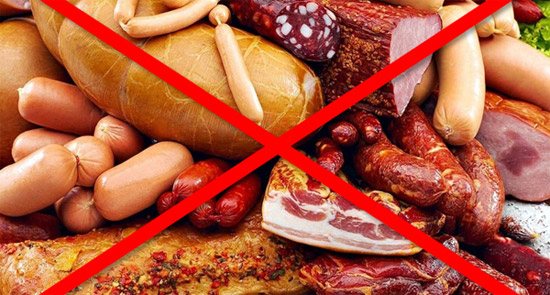
It is necessary to limit the consumption of such vegetables:
- sorrel;
- spinach;
- radish;
- radish.
Bananas are a prohibited fruit. The patient is not allowed to eat sweets: sweets, ice cream, chocolate, cakes. Drinking strong tea, cream, mayonnaise, lard, mustard, and cheese is also contraindicated.
Drinking alcohol increases the symptoms of the disease. Alcohol provokes depression and promotes the removal of beneficial vitamins and microelements from the body. Drinks containing ethanol destroy brain cells - alcohol and Parkinson's disease are incompatible.
Principles of healthy eating when ill
Both with this illness and with other diseases, systematic nutrition is a guarantee of good condition and speedy recovery. There is no need to treat with unconditional trust the advice of traditional medicine or the judgments of loved ones in the matter of choosing a diet. It is better to consult a nutritionist individually before starting a diet. The doctor will prepare a meal plan and inform you about the features of proper nutrition.

General rules and laws of nutrition:
- A varied diet for the patient, which should include all categories of products. Taking special vitamins is not excluded.
- Performing special gymnastic exercises, adhering to the regime. The doctor, based on the patient’s physical fitness and height, will tell you what weight the patient should be and how many calories should be consumed every day.
- The patient's diet should consist of fiber, cereals, pasta, rice, and fresh fruit.
- It is better to consume foods that contain little fat and low-quality substances.
- You should not consume sugar in large quantities. It is necessary to reduce the addition of salt to food.
- It is recommended to drink at least 8 glasses of pure spring water daily.
- The consumption of alcoholic beverages is prohibited due to the incompatibility of certain medications with alcohol.
- It is important to ensure maximum balance of all food groups. In winter and spring, it is worth using medications with microelements.
Recommended menu
For Parkinson's disease, five meals a day are provided. For breakfast eat:
- a portion of porridge with slices of dried fruit;
- unsalted cheese;
- omelet with pieces of zucchini or pumpkin.
For second breakfast you can prepare a cottage cheese soufflé. For lunch they eat a variety of soups:
- fish;
- buckwheat;
- vegetable.
You can add meatballs or a small amount of minced meat to vegetable soups. Mashed porridge or stewed vegetables are prepared as a side dish for main courses at lunch. You can add a little unrefined vegetable oil to the porridge.
An afternoon snack may consist of the following dishes:
- berry soufflé;
- casserole made from cottage cheese.
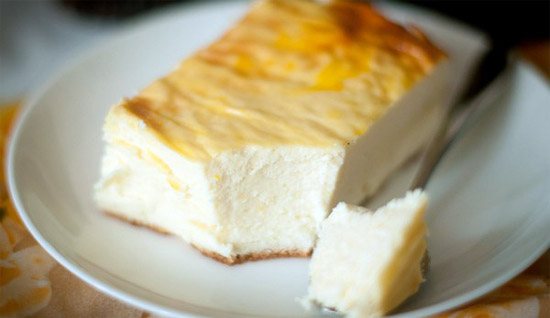
For dinner you can cook fish dishes, steamed puddings, and vegetable purees. Add to vegetable puree:
- potato;
- cabbage;
- carrot;
- green pea.
An approximate menu for one day is presented in the table below.
| Eating | Approximate menu |
| Breakfast |
|
| Lunch |
|
| Dinner |
|
| Afternoon snack | A small amount of stewed apples or juice with a few bran breads. |
| Dinner |
Before going to bed, you should drink a glass of kefir. |
Compatibility of food and medicine
In the complex therapy of Parkinson's disease, tablets containing levodopa are used. Such medications should be taken after meals. Take medications with a sufficient amount of liquid. One of the side effects of these medications is nausea. Therefore, the doctor may additionally prescribe a medicine that reduces the discomfort.
It is recommended to avoid foods that contain large amounts of vitamin B6. This vitamin impairs the absorption of levodopa.
A diet for Parkinson's disease, which helps the absorption of tablets, should be prepared after prior consultation with a doctor. Choosing a high-protein diet may reduce the effectiveness of some medications.
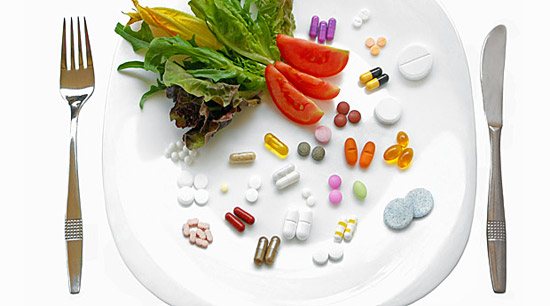
Recommendations for choosing a diet
People with Parkinson's disease often experience difficulty swallowing. In such a situation, it is recommended to grind the food to a puree. If you have difficulty swallowing, exclude fried and rough foods from the menu.
If the patient experiences edema, it is necessary to exclude salt from the diet. It promotes the accumulation of excess fluid. The menu should include dried fruit compotes and apples. A fruit drink made from cranberries also helps eliminate swelling.
If the patient has constipation, the diet is enriched with the following products:
- fresh vegetables;
- fruit salads;
- foods that contain a lot of fiber.
A patient suffering from constipation is advised to drink enough clean water.
If nausea occurs, you should eat small portions, slowly. It is recommended to separate cold and hot food intake. Juice squeezed from citrus fruits is excluded from the daily menu. The drink contains a large amount of acid. It is necessary to limit as much as possible the consumption of foods that increase nausea. These include:
- fried food;
- products made from butter flour;
- fatty food.
Basic rules for eating
Parkinson's disease requires strict adherence to a diet. This is explained by the fact that patients take medications that need to be taken at a certain time, coordinating it with food intake.
In order for nutrition and therapy to be coordinated, it must be remembered that the patient should eat 2 hours after taking the medications, during which time they should be absorbed into the intestines. The effect of the medicine may not be obtained immediately, but after some time, because the rate of absorption by the small intestine decreases for various reasons.
You can eat food before taking the pills, but it should be food with a minimum amount of protein.
Some patients experience difficulty swallowing food. In order for this process to proceed without complications, you need to ensure that the food is thoroughly chewed. This rule applies to both sick and healthy people. The more thoroughly the food is chewed, the faster and more complete the process of its absorption in the intestines. It is not for nothing that the Chinese advise bringing food in the mouth to such a state that it can be drunk. This is one of the principles of healthy eating.
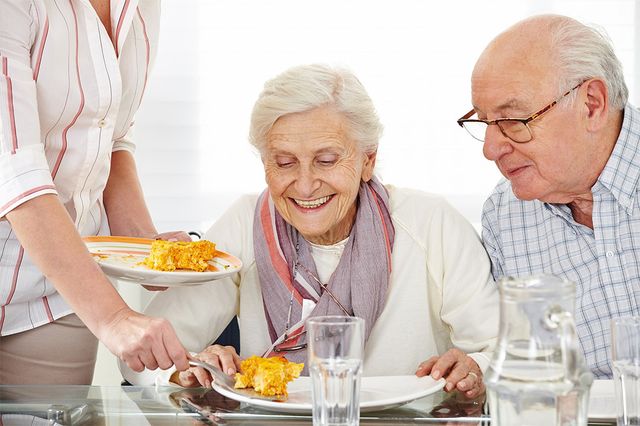
Posture while eating is also important. Your back should be straight and you should lean forward slightly while swallowing. Food should be washed down with a small amount of water after each swallow.
Overeating is harmful, so it is better to eat in small portions, but more often.
If for healthy people the process of eating does not pose any difficulties, then for patients with Parkinsonism it is a whole problem. Hand trembling does not allow you to hold a spoon or fork, glass or plate in your hand. Therefore, family members need to ensure that the patient, with the help of certain devices, can do without outside help. This will help them avoid depression from their helplessness.
The plate with food can be attached to the table at a slight angle: this will make it more convenient for the patient to take food (especially liquid) from it. To make it convenient to drink from a mug, you can use a straw. It is better for the patient not to use a fork to avoid damage to the skin of the hands due to tremor. All dishes should be eaten with a spoon.
There are also requirements for the surface of the table; if possible, it should not be smooth: a plate or glass will not slide on a rough surface.
The handle of the spoon, as well as the mugs, can be wrapped in rags to make them more voluminous and easy to pick up. In addition, they will not constantly slip out of your hands.
Much attention is paid to the drinking regime. Patients are advised to drink at least 1.5 - 2 liters of water per day - that's 6 - 8 glasses. It is better to drink the last daily portion of water after lunch, rather than in the evening, because drinking liquid shortly before bedtime provokes frequent visits to the toilet at night and swelling in the morning.
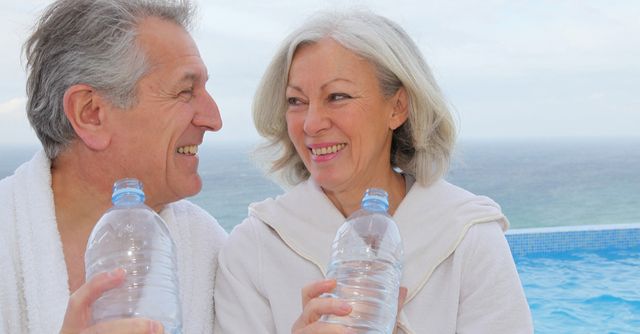
Patients should control their weight. If their diet consists of only healthy and permitted foods (vegetables, fruits, cereals, protein, fiber), then the body receives the required amount of nutrients and elements. If the weight has decreased by 10% over 3 months, it means that the person needs more food. If you are malnourished, therapy does not have the desired effect.
